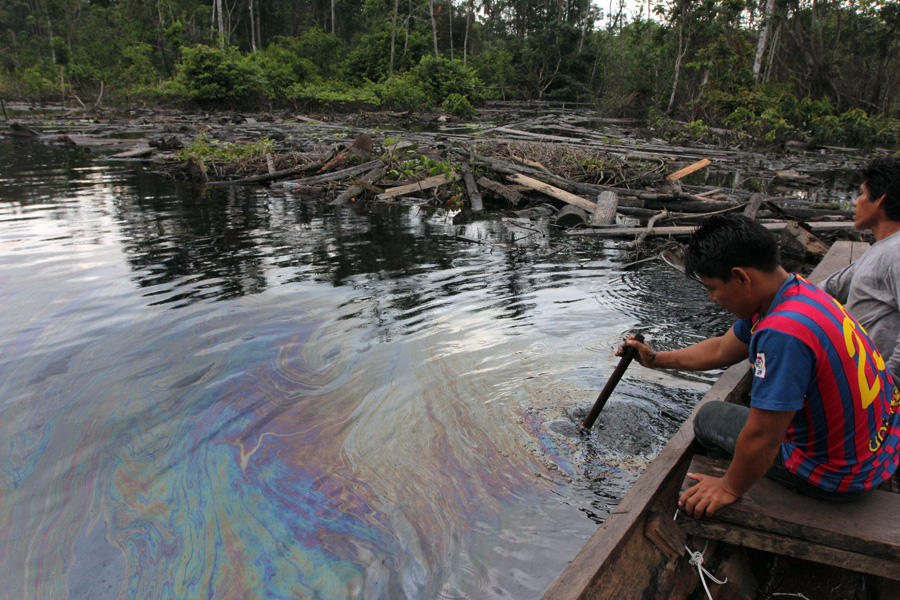Industrial Engineer with focus on Tribology and Sealing Technology. Team player with an open-minded mentality author of several scientific publications and an industrial patent. Interested in Lean Management, Innovation, Circular Economy, Additive Manufacturing and Connected Objects Technology.
Bio-lubricants and Environmentally Acceptable Lubricants (EAL)
The increasing awareness on environmental pollution caused by many chemicals, including lubricants, promotes the use of environmentally friendly products. There is a clear trend towards a more responsible use of lubricants and several legislations already limit the use of certain oils in some applications. Bio-lubricants are present in construction, mining forestry, agriculture, medicine, food-processing industry, hydroelectric dams and various marine uses.
As an example, the operational discharges from stern tube leakage only into (sea)port waters is estimated to be between 37 and 61 million liters per year, which is more than the amount of engine oil present in all passenger cars in the Netherlands together.


Due to that, the US Vessel General Permit (VGP), effective the 19th December 2013, stipulates that in the US waters
“all commercial vessels (not only new vessels) which are 79 feet (24 meters) long or greater must use Environmentally Acceptable Lubricants (EAL) in all oil-to-sea interfaces, unless technically not feasible”.
It is foreseen that other regulatory bodies impose similar restrictions in the coming years.
Commercial branding can easily lead to a certain misunderstanding: “bio-based”, “environmentally friendly”, “biodegradable”, “ecological”, “green”, “environmentally acceptable”, “food-grade”, “readily biodegradable” or “inherently biodegradable”, are all terms used to express a certain degree of eco-sustainability although their specific eco-proprieties are vaguely defined.

The US Environmental Protection Agency (EPA) defines EALs as lubricants meeting certain criteria of biodegradability, minimally-toxicity and their trend to bio-accumulate. Biodegradability is a measure of how quickly the lubricant is broken down into its harmless constituents. Minimally toxic lubricants have little to no impact on animal life and bioaccumulation describes how easily a chemical can build up in living organisms. Notice that, in this case, there is no limitation on the origin of the base-oil. Some synthetic lubricants, such as polyalphaolefins (PAO), are non-renewable mineral-based oils and are still classified as EALs. It is not fully established whether the so called “bio-lubricants” need to be based on renewable sources or they just need to have a low environmental impact.
Based on the origin of their base-oil, lubricants can be classified as:
- Mineral oils: petroleum-based
- Fixed oils: vegetable oils and animal fats
- Synthetic oils: artificial chemically engineered oils
Nowadays few lubricant formulations contain only one base oil. Semi-synthetic oils are blends of mineral and up to 30% synthetic oils. Additives are commonly mixed with the base-oils leading to final products with significantly improved proprieties. Most of the additives have the potential to harm the human body.
Fixed lubricants from vegetable oils and animal fats, generally known as lipids, were the main source of lubricants until late 19th century. Since the end of the WWII and until now, petroleum-based oils have replaced them as the main raw material for the production of lubricants. As commented, there is an increase interest in expanding the use of fixed oils driven mostly by environmental, safety and health concerns.
Mineral oils
Mineral oils represent more than 90% of the market which have a wide availability and low price but are heavily contaminating the environment. Petroleum-based oils are complex mixtures of thousands of different compounds with a wide molecular weight distribution. These contain polycyclic aromatic hydrocarbons (PAHs) which are environmentally harmful. Many mineral oils, generally those included in API Group I, have sufficient evidence of carcinogenicity to humans. The oils in Group II have proven to produce similar effects to animals so far.
Environmentally sensitive facilities like hydropower plants, flood-control pumping plants and lock-and-dam sites are potentially highly polluting and mineral oils must be replaced by more eco-friendly lubricants.
Fixed oils
Fixed oils are lubricants obtained from vegetable oils and animals fats. They are named “fixed” since they will not volatilize without decomposing. The most common natural sources of vegetable oils are linseed, castor, corn, peanut, soybean, palm, coconut, rapeseed, olive and sunflower oil while the most common animal fats are lipids such as tallow (beef fat) or lard (pork fat).
Fixed oils are superior in many aspects to mineral-oils. They have a superior lubricity, higher Viscosity Index (VI), lower volatility and higher flash points. In addition, fixed oils are free of PAHs and low in potential pollutants such as sulphur-containing compounds.
One of the main drawbacks of fixed oils is their oxidative stability becoming thick and polymerizing to a plastic-like consistency. They also have a really bad hydrolytic stability so they easily decompose when mixed with water. This fact makes them highly biodegradable but require from a special attention when it comes to water ingress in the lubricant system. This is specially challenging since bio-lubricants are highly demanded in water-oil interfaces to prevent harmful spillages of toxic substances. Oxidation, hydrolysis and ageing of fixed oils are highly temperature-driven phenomena.
The following chart compares fixed oils and mineral-based lubricants characteristics:
| Fixed lubricants: vegetable oils and animal fats (bio-based) | |
| Advantages | Drawbacks |
|
|
Synthetic oils
Synthetic lubricants were developed in the early 1930s to overcome the general shortage of petroleum-based stocks and the same time overcome the limitations of mineral oils. The first real-world trial for these lubricants came during World War II when using synthetic base oil in aircraft engines.
The more expensive synthetic lubricants are tailored to its particular application overcoming the performance of mineral oils. These kind of lubricants present a better oxidation stability, better VI, a much lower PP and usually leads to a lower coefficient of friction. Synthetic oils can be artificially manufactured using chemically modified petroleum but can also be synthesized from other raw materials. Some synthetic lubricants are environmentally friendly although the most part of them are toxic and have a low biodegradability.
There are several kinds of synthetic lubricants available. Since formulations between families of synthetic lubricants are completely different, each one must be studied independently.
The following chart includes only the most common synthetic oil groups:
| Synthetic Lubricants | |
| Petroleum-based (non-renewable) | Organic-based (renewable) |
|
|
The VGP suggests the use of PAOs, SEs and fixed oils as EAL candidates to replace the traditional mineral-based oils. Some PAGs, particularly the water soluble ones, also meet EALs requisites but are not mentioned in the VGP brochure.

Further consequences appeared with the use of EALs in lubricating systems. Many common rubber sealing components, for example, are not compatible with EALs leading to a decrease on their mechanical proprieties and severe elastomers swell In addition, EALs will absorb more water than traditional oils.
Development of bio-based high-performance lubricants requires insight in the relationship between physicochemical and tribological proprieties of the bio-based ingredients. Switching from a well-known mineral oil to an EAL will significantly impact the mechanisms relying on the oil performance such as journal bearings, transmission gears, thrust bearings, ball bearings, cam followers and especially rubber-made sealing components. These mechanisms are optimized for its use under mineral oils, new designs might be required when running together with EALs. It is important to thoroughly consider the impact of these new eco-friendly lubricants on the whole tribo-system before replacing the traditional mineral oil.

Leave a Reply
You must be logged in to post a comment.


Thanks Xavier. I’ve been involved with EALs since 2013 as a marketing manager for a lubricant manufacturer. I really appreciate your clear descriptions and definitions in the above article. Education on EALs is very important for users who are considering EALs. This article is a very good source.
Ben Bryant
Marine Market Manager
Kluber Lubrication NA